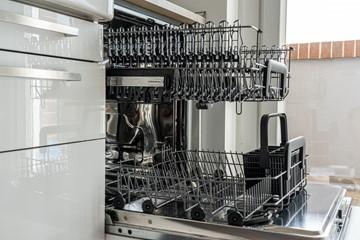Here is a simple buying guide that will show you how to shop scratch and dent appliances.
Buying scratch and dent appliances may be worth it if you deal with the risks properly. But what are scratch and dent appliances?
As the name suggests, these appliances may have slight external defects like minor scratches and dents. Otherwise, they are new and function perfectly well in most cases.
Due to the slight cosmetic defect, they are sold at a heavy discount. These are a few buying tips and tricks that you can take advantage of when shopping for scratch and dent appliances.
Take A Close Look
If an appliance takes your fancy, have a real close look at it before buying. Check the scratches and dents carefully. If you are lucky, these defects may be on the sides or towards the back of the appliance, where they are harder to spot. However, there could be scratches and dents visible on the front side.
If you find cracks in control panels and displays, then you should not buy the appliance. The appliance could fail at any time, and any expensive repairs may be required.
Check Prices
You should be getting a good deal on scratch and dent items. So be sure to check out the price tag. The appliance should be selling at a 40 to 60 percent discount. If such a discount is not available, you should wait for the price to come down.
Know The Risks Involved
There is a lot of risks involved in buying scratch and dent items. Even if you are careful, you could end up buying an item that keeps breaking down. You will then have to spend a good deal of money on repairs and part replacement.
To minimize the risk, make sure that the scratch and dent appliance you are considering has an official warranty from the manufacturer. You should think of paying extra money for extended coverage beyond the standard one-year warranty.
DIY
Scratch and dent appliances won’t suit most people because you are on your own when installing these appliances and removing your old appliance.
You will have to haul away the old appliance yourself. You will then have to install the scratch and dent item on your own. This means tinkering with circuit breakers, electrical wires, water lines, dryer vents, and other parts. Unless you are a DIY expert, you should not try to buy scratch and dent products.
Before you buy it, make sure you know completely about how and where the appliance is damaged. Check the product and inspect it carefully before finalizing your decision to buy. Take note of the extent of damage done and whether it is serious or just cosmetic. You can also buy extended warranties to reduce the risk of the machine breaking down.
Bottom Line
There are plenty of risks involved when buying scratch and dent appliances. So, you should be fully sure of what you are doing.

